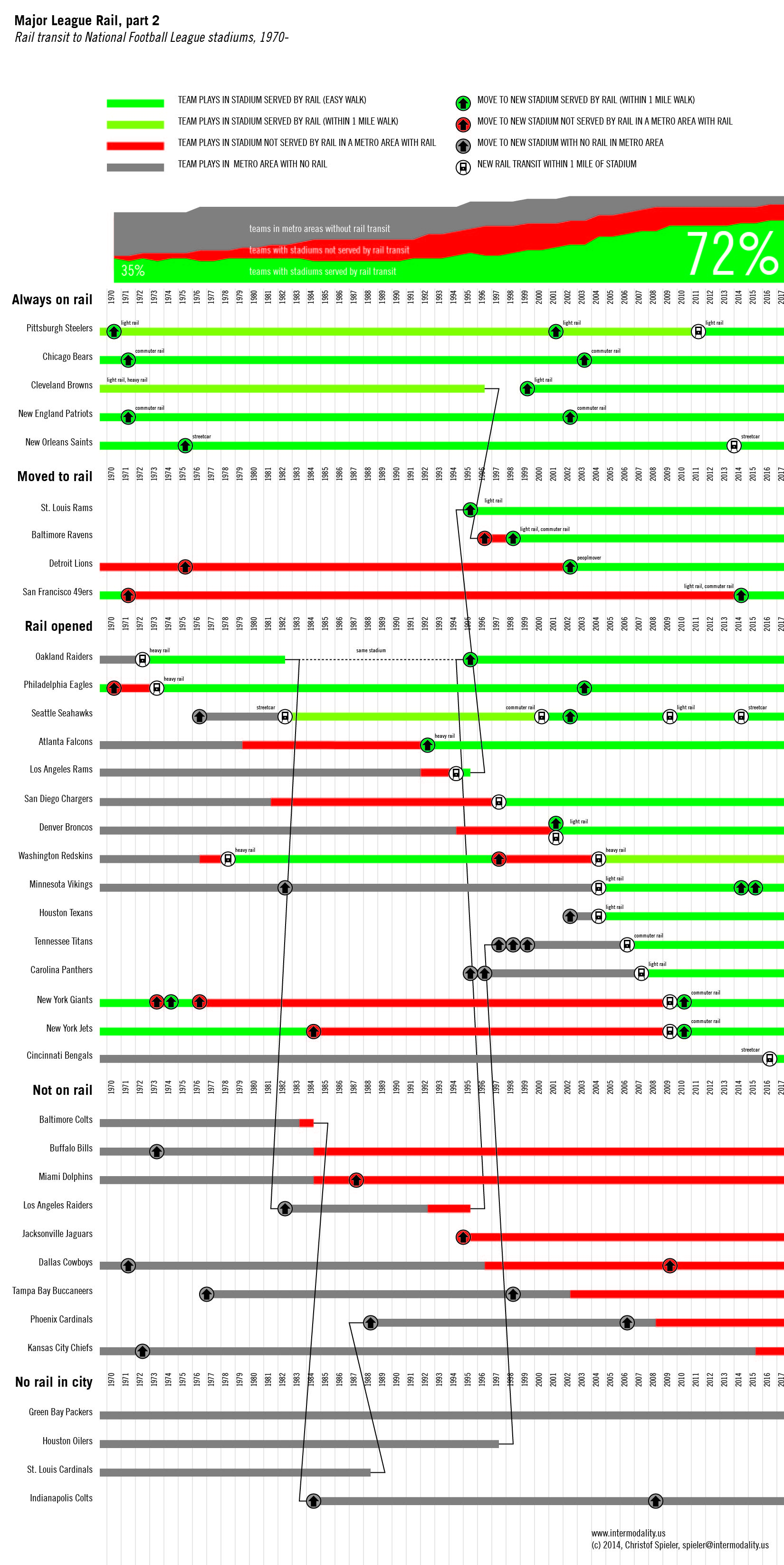Major League Rail part II
Organizers are calling this week’s Super Bowl XLVIII the “First Mass Transit Superbowl.” That’s fair; no other Super Bowl has gone so far in promoting mass transit for fans getting to the game. But transit access is the norm for NFL games these days. The first Super Bowl to be played within walking distance of rail transit was IV in New Orleans, and 10 years ago Houston opened its first light rail line just in time for the Super Bowl.
We tend to think of baseball as a downtown sport and football as a suburban one. That’s true to some extent; there are quite a few cities (San Diego, San Francisco, ) where the baseball team plays downtown and the football team is in the suburbs, surrounded by big parking lots. But there are actually more cities where both baseball and football are downtown, and even one (Atlanta, always the oddball) where baseball is in a suburban setting (and moving to a more suburban one) and football is downtown. Moreover, many of the cities where football is in the suburbs still have rail there. The final score: 72% of NFL teams play within walking distance of rail, nearly as many as the 77% of MLB teams that do. As with baseball, the biggest factor in that increase has been the opening of new rail lines, not teams moving to rail. That includes three teams — the Patriots, the Jets, and the Giants — that have gameday-only commuter rail lines to their stadiums.
The most visible difference from baseball on this graphic: football teams move more often. But the last time a team moved from a stadium with rail to another city that didn’t have rail (or rail in the works) to the stadium was the Raiders in 1982 — and they moved back to their old stadium in their old city a little more than a decade later.

Comments are Disabled